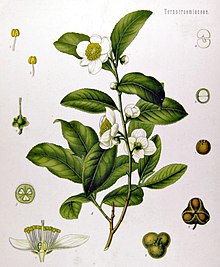
Vinca minor ‘Bowles Variety’
Most garden designers, indeed most gardeners are aware of the diverse origins of the plants in their gardens. It only takes a brief look at the specific epithets to realise that terms like canadensis, japonica, europaea, lusitanica, etc. are direct geographical references. It is possible to take a swift journey around the globe in a few minutes in most gardens, from Hebe in New Zealand, to Tulips from west Asia, Rhododendron from the Himalaya and Japan, perhaps ending up at Dogwoods from North America. These plants were collected by dedicated and pioneering plant collectors who travelled the globe to bring back ever more exotic fare for the discerning Victorian gardener. their names are also commemorated in specific epithets and varietal names – fortunei, davidii, wilsonii, banksii, etc and of course ‘Bowles variety’!
Much of the time we forget this and simply take gardens and the plants they are stocked with at face value, arranging them in terms of colour, texture and flower period in what we see as a pleasing combination. The more practised tend to look for subtler combinations – planting associations that speak to origin or habitat; it is these that tend to prove the most interesting and longest lasting arrangements.
There are of course other ways in which we ‘travel’ in our gardens: countless references to Mediterranean or Japanese gardens; snippets of designs collected magpie-like from here and there. As a child I remember being fascinated by a grove of bamboo in our local park. It was quite a big area (to an eight-year-old anyway) with paths winding through it. I imagined I was in some tropical bamboo forest – I expected to discover some long-lost soldier at any point. Later (in my teens) I was captivated by Canizaro Park in Wimbledon, which I visited many times – a fantastic garden well stocked with exotics as well as areas of simple woodland. I was transported when wandering around it and felt that I was really somewhere else completely.

Tea – Camellia sinensis
Britain is famously a nation of gardeners. But it was actually our obsession with gardening combined with our growing sea power that led to the birth of the empire. Far-fetched? Give it a little more thought. Let’s start with the spice trade. The ability to grow spices in different locations from their origins aided the breaking of the monopolies. The same with tea – the Chinese monopoly was broken by the English (and to a lesser extent the Dutch) successfully cultivating tea in India and Ceylon (as it was then). In fact, the horticultural story for coffee, sugar, rubber, tobacco and an endless list of other products are closely bound up with colonial expansion. So principally for commercial reasons, horticulturists and botanic gardens were very important to the expansion of the empire. Along with mining and extraction, it can be argued that the European fortunes were almost entirely built on these products.
So next time you site in your garden (perhaps with a cup of tea or coffee?), give some thought not only to the origins of all the plants around you, but also to the broader role that horticulture has played in the development of society, for better or worse, over the last two and a half centuries. Alternatively, you could just be transported into another world by the beauty around you!

